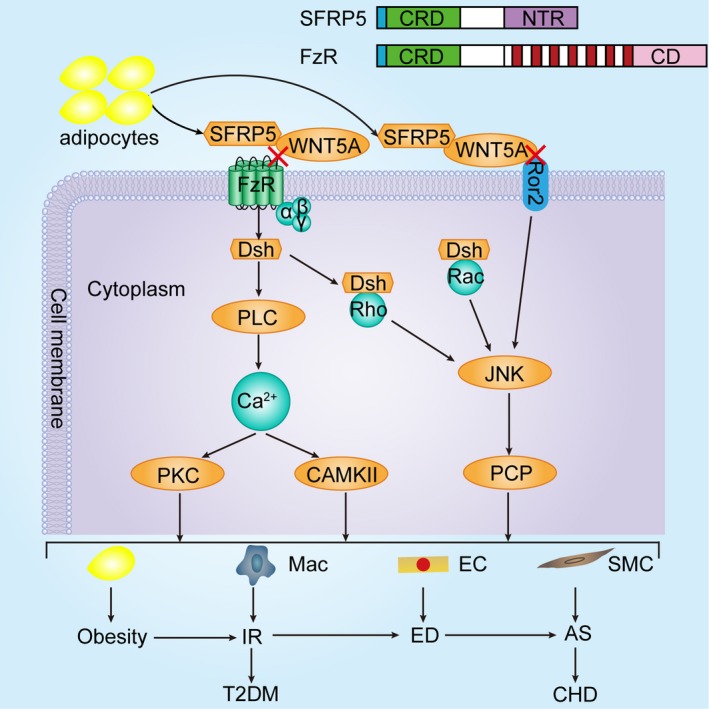Figure 1.

SFRP5 at the crossroad between obesity, T2DM and CHD. As a member of the non‐canonical WNT family of proteins, WNT5A mainly activates WNT5A/Ca2+ and WNT5A/JNK signalling pathways. One branch of the non‐canonical signalling pathways involves the activation of small GTPases Rho and Rac. After WNT5A binds to FzR, activated DSH integrates Rho and Rac into it, respectively. Then, the DSH‐Rho and DSH‐Rac complexes activate JNK to regulate the PCP pathway. In addition, WNT5A can also bind to Ror2 to directly activate JNK to mediate the PCP pathway. This signalling branch has been shown to regulate cell orientation. Another branch, when activated, leads to PLC‐mediated increase in intracellular Ca2+ levels, which further activates CAMKII and PKC. This signalling branch has been demonstrated to mediate cell proliferation, migration and adhesion. Inflammation plays an important role in this process, which is from obesity, IR and ED to atherosclerosis. As we know, CHD has been regarded as an atherosclerosis‐related disease and the development of T2DM is significantly correlated with insulin resistance. Therefore, we propose that SFRP5, as an anti‐inflammatory adipokine, might link obesity, T2DM to CHD. Abbreviations: AS, atherosclerosis; CAMKII, Ca2+/calmodulin‐dependent protein kinase II; CD, cytoplasmic domain; CHD, coronary heart disease; CRD, cysteine‐rich domain; DSH, dishevelled; EC, endothelial cell; ED, endothelial dysfunction; FzR, Frizzled receptor; IR, insulin resistance; JNK, C‐jun N‐terminal kinase; Mac, macrophage; NTR, netrin‐like domain; PCP, planar cell polarity; PKC, protein kinase C; PLC, phospholipase C; Ror2, receptor tyrosine kinase‐like orphan receptor 2; SFRP5, secreted frizzled‐related protein 5; SMC, smooth muscle cell; T2DM, type 2 diabetes mellitus; WNT5A, wingless‐type family member 5A
